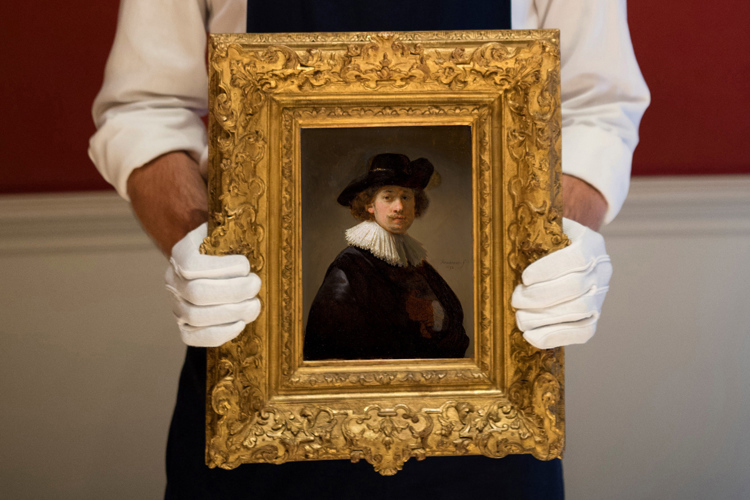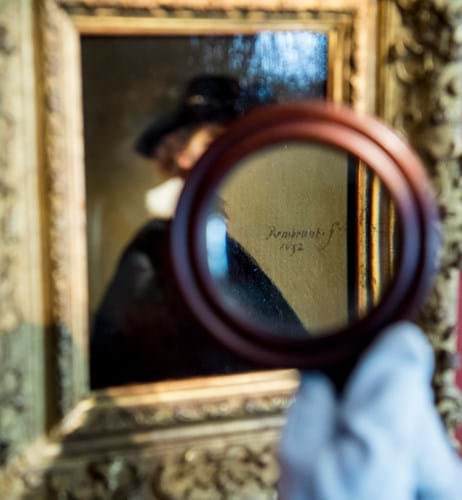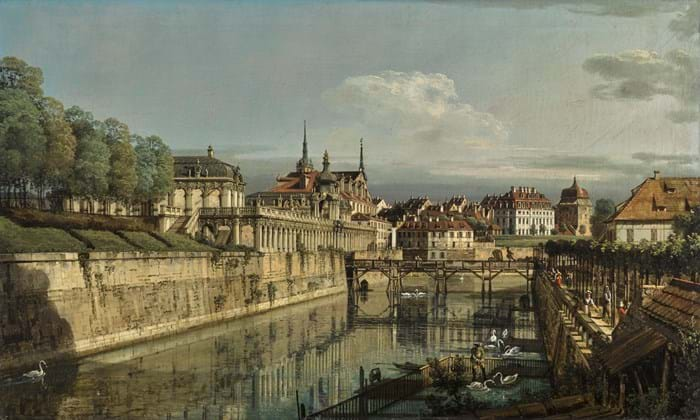Estimated at £12-16m, it was one of just three self portraits painted by the artist remaining in private hands with the almost all the others now in major museum collections.
In all, Rembrandt recorded his own physiognomy in no fewer than 80 paintings, etchings and drawings.
Sotheby’s said this example was one of the earliest and could be dated to a narrow window towards the end of 1632, thanks to the fact that it was signed with a form of the artist’s signature that he only very briefly employed. Dendrochronological analysis also showed that it was painted on a panel cut from the same Baltic oak tree as another Rembrandt picture known from the same period.
The date implies the artist was aged 26 when he painted the portrait.
No details were available about the consignor of the work, but the catalogue noted that it had been in the same collection since it was acquired from Noortman Master Paintings in 2005, the year before the dealership itself was acquired by Sotheby’s.
The work carried a third-party guarantee, meaning it was always bound to sell at the auction on July 28. With buyer’s premium added, the price was £14.6m.
‘Instantly recognisable’
The painting showed Rembrandt wearing a ruff and black hat and was one of only two self-portraits in which he depicted himself formally dressed. It was created at a time when he was just establishing himself in Amsterdam and enjoying some new-found commercial success.
Ahead of the sale Sotheby's co-chairman of Old Master paintings worldwide George Gordon, said: “Rembrandt’s face is instantly recognisable to us at every stage of his adulthood – far more so than any other painter.
“We know that this painting was created in a remarkably short period of time, because he laid in the background first, but when he signed it upon completion, the background was still wet, so the signature is impressed into it by his brush.”
The price was a record for a self-portrait by the artist at auction, eclipsing the premium-inclusive £6.9m for Self-portrait with shaded eyes sold at Sotheby’s in 2003, although the overall record for Rembrandt, according to ‘Artprice by Artmarket’, stands at £18m for two paintings sold at Christie’s: Portrait of a man with arms akimbo, a later work that sold in December 2009, and a portrait of a lady (also from 1632 like the current work) that sold December 2000.
Restituted view of Dresden
Elsewhere in the sale, a view of Dresden from c.1758 painted by Bernardo Bellotto (1721-1780), the Venetian artist who was the nephew of Canaletto (1697-1768), sold at £4.6m (£5.44m with premium).
Having been returned last year by the German government to the heirs of Jewish retail magnet Max Emden, whose art collection had been seized by the Nazis, it was estimated at £3m-4m.
The work itself shows the moat of the Zwinger, a palatial Baroque complex in Dresden which is probably the city’s most famous building. The 19in x 2ft 8in (48 x 80cm) oil on canvas relates to a larger painting for which Bellotto was commissioned by Augustus III (1696-1763), son of Frederick Augustus I, Elector of Saxony.
Another old Master at the sale was a portrait of a lady which was catalogued as a fully-ascribed work by Sir Peter Paul Rubens (1577-1640). Estimated at £2.5m-3.5m, it sold on low estimate to a single phone bidder.
The 3ft 7in x 2ft 8in (1.1m x 82cm) oil on canvas was consigned by an anonymous vendor who acquired it at a UK regional saleroom in November 2017. Back then it was offered as a picture by Rubens’ workshop and was knocked down at £65,000 (see ATG No 2320).
Having since been cleaned and having a layer of varnish removed, recent technical analysis indicated that the artist made numerous adjustments to the portrait as it was painted, something that the Sotheby’s catalogue states gives “clear indications that this is the prime original of this composition”. The catalogue noted, however, that “modern scholars disagree on the degree of studio participation in this portrait”.
The Sotheby's sale also offered a host of modern and contemporary works including a Gerhard Richter that fetched £9m and a Joan Miro that made £20.65m. However, Francis Bacon’s Study for a Portrait of John Edwards from 1986, which was estimated £12m-18m, was one of six withdrawn works.
Overall the sale generated £149.7m including premium with 62 of the 65 lots selling (95.4%) on the night.
Another notable lot was Banksy’s Mediterranean sea view, a triptych from 2017 that was being sold to help build a new acute stroke unit and buy children’s rehabilitation equipment for BASR hospital in Bethlehem. Estimated at £800,000-1.2m, it took seven-minutes to sell and was knocked down at £1.85m – the second highest price for the artist at auction.








